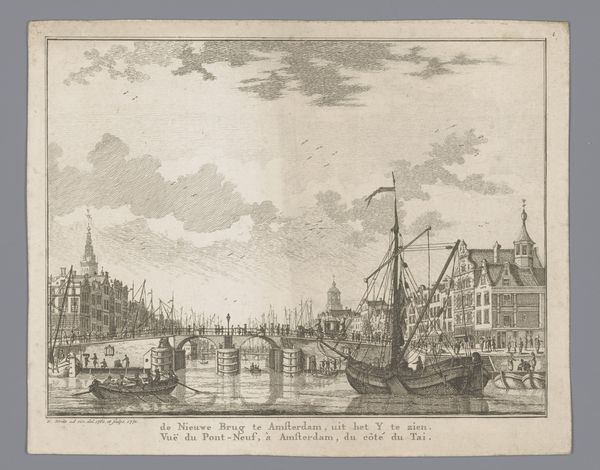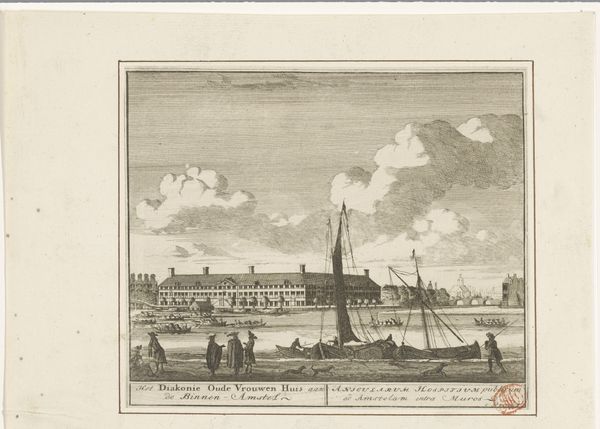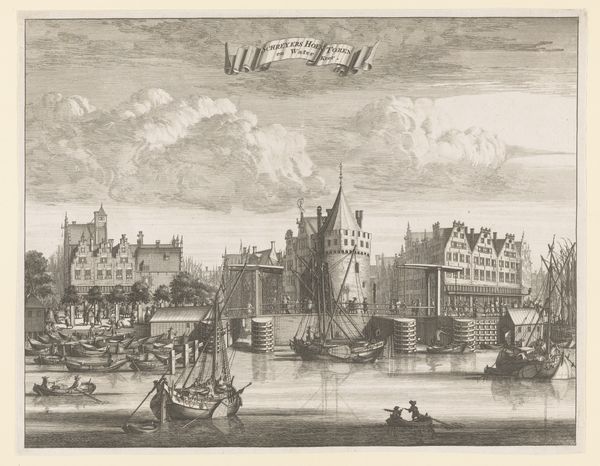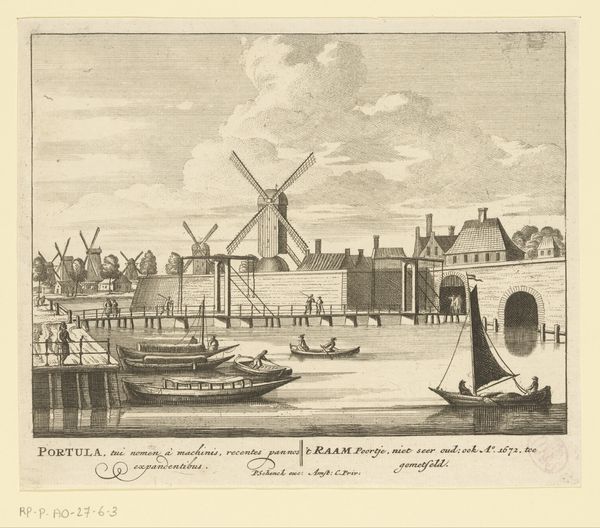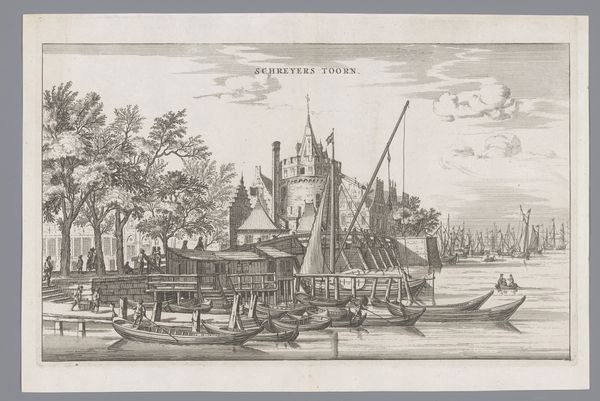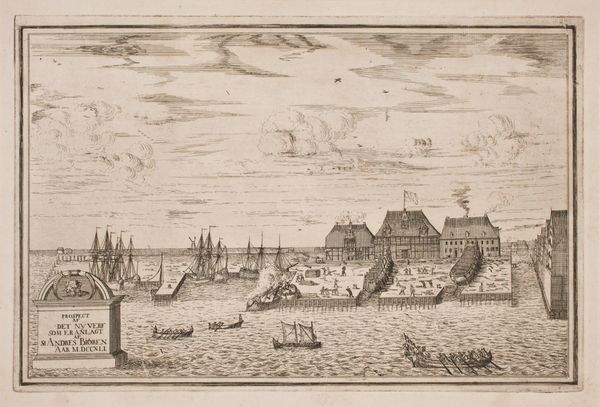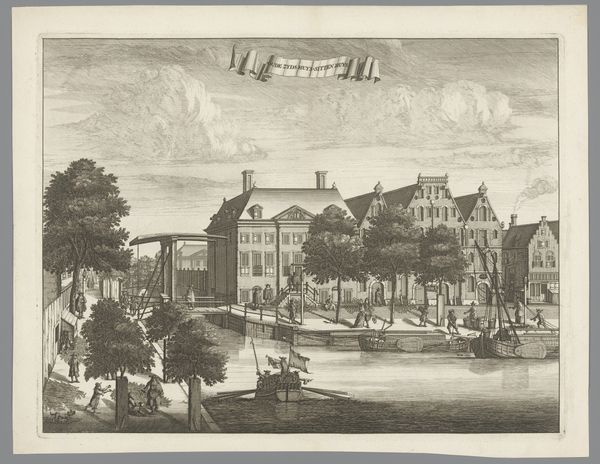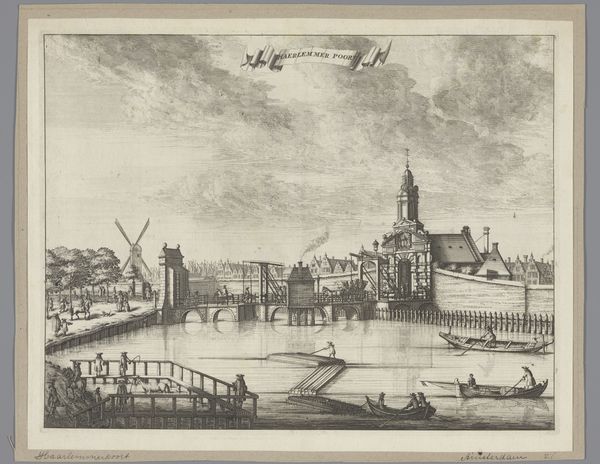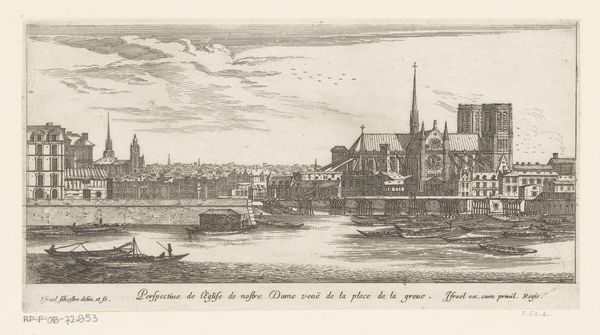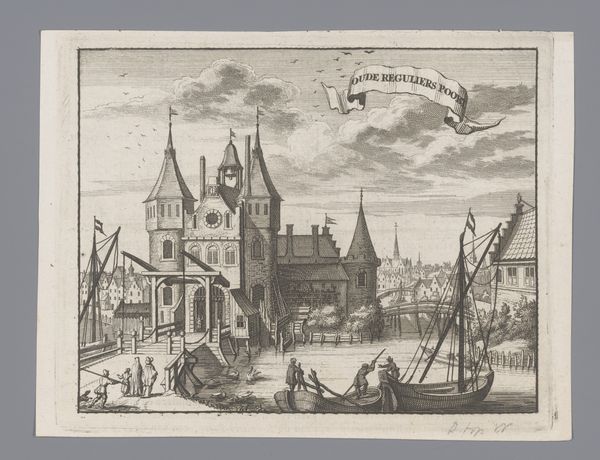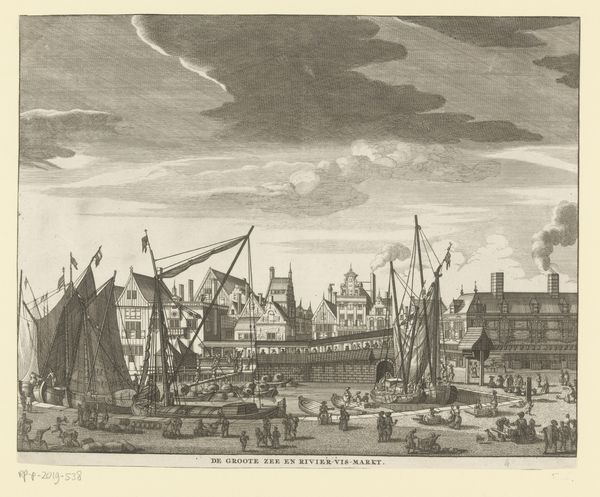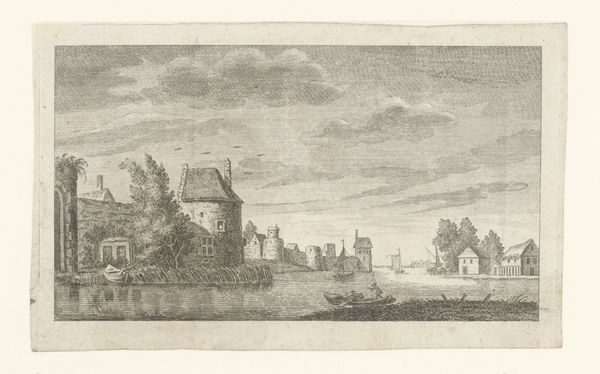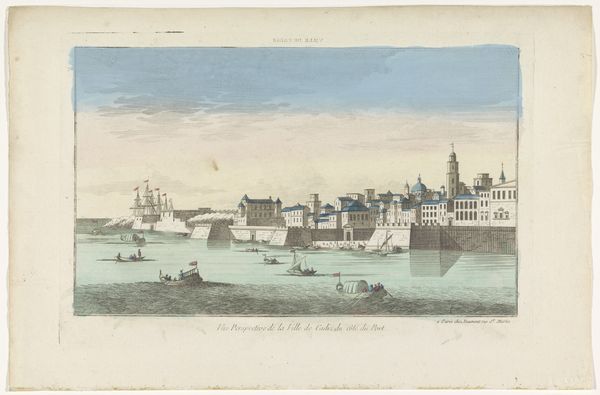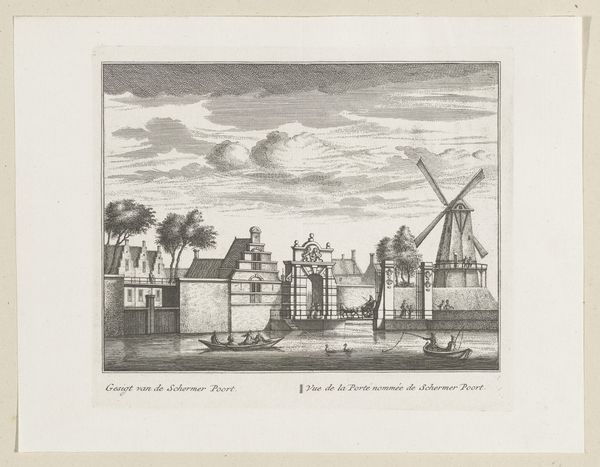
print, engraving
#
dutch-golden-age
# print
#
landscape
#
cityscape
#
street
#
engraving
Dimensions: height 122 mm, width 156 mm
Copyright: Rijks Museum: Open Domain
Curator: Looking at this engraving from 1693, "Gezicht op de Raampoort te Amsterdam," currently held in the Rijksmuseum collection, you get a vivid glimpse into Amsterdam’s cityscape during the Dutch Golden Age. Editor: My immediate reaction is a feeling of industrious calm. The scene, rendered meticulously, reveals a place bustling with commerce yet anchored in tradition. Those windmills! They are a constant in Dutch identity. Curator: Absolutely. The Raampoort, or Raam Gate, functions as both a point of entry and a defensive structure, representative of the controlled access crucial to the city's prosperity. Notice how the gate acts as a sort of customs and trade hub as well. Editor: The visual weight definitely resides with the windmills, looming above the fortifications and city gate. In that era, mills symbolized both prosperity and a relentless struggle against nature; they practically deified the land. Beyond mere function, windmills became synonymous with Dutch independence. Curator: It is curious how prominent they feature in civic imagery of the time, isn’t it? Also note the level of detail; even though this is a print, we get a real sense of daily life and the role the Raampoort played in regulating Amsterdam’s maritime activity. The boats on the water show movement and life being breathed into the print. Editor: The boats do add dynamism, especially with their covered sections – what are they protecting? One could suggest these details represent commerce both hidden and visible; each vessel has its own silent story. Are those merchants avoiding inspection, or wealthy elite with a sense of anonymity? The print becomes a record not just of physical spaces but of the complex transactions of the period. Curator: It’s a lovely tension—the openness of the water meeting the rigidity of the fortifications. One aspect I love about these urban landscapes is how they document Amsterdam's burgeoning social mobility. Printmaking helped spread the Dutch ideals as widely as possible. Editor: Indeed, art democratizing a particular image of Dutch society. I’m struck once more by how simple yet profound the Raampoort is in its quiet symbolism. A nexus of activity, a stoic emblem of nationhood, and, of course, constant motion through time. Curator: Yes, I completely concur. Considering the historic relevance of printmaking itself as a way to document the city, the engraving almost acts as a social record, showing daily life and civic ambition. Editor: It’s rather inspiring. That one still image captures what it was to live, work, and exist in such a powerful location at the close of the seventeenth century.
Comments
No comments
Be the first to comment and join the conversation on the ultimate creative platform.
